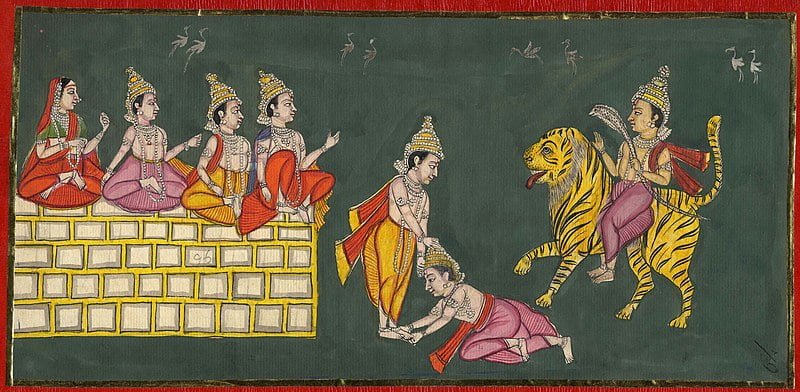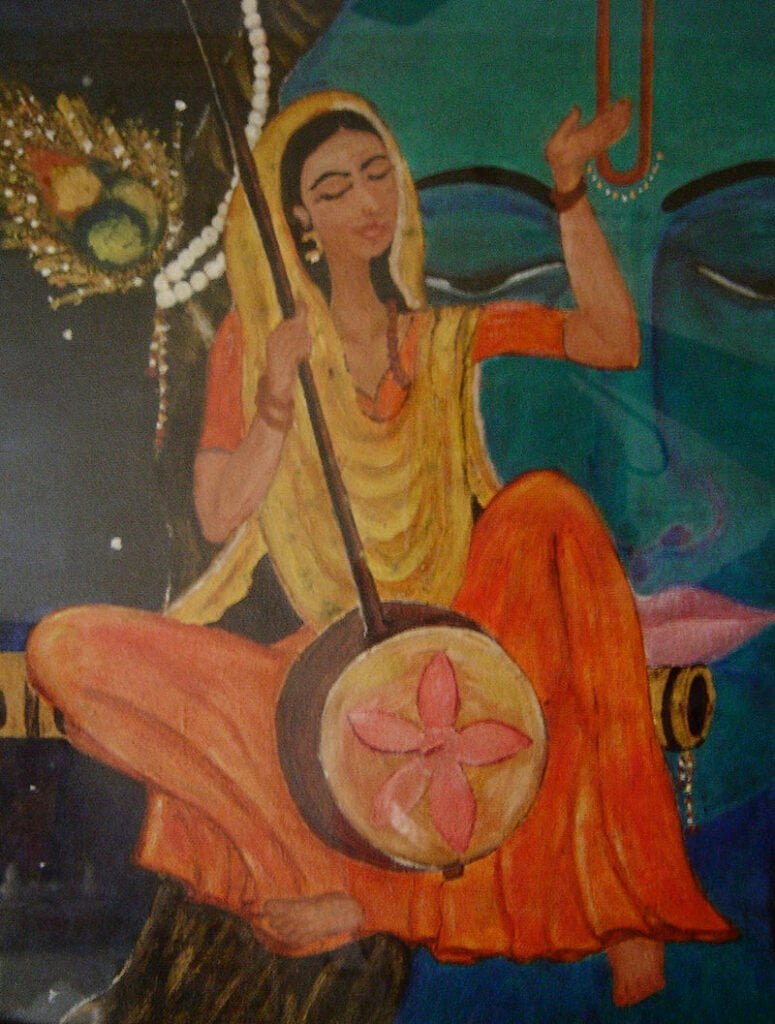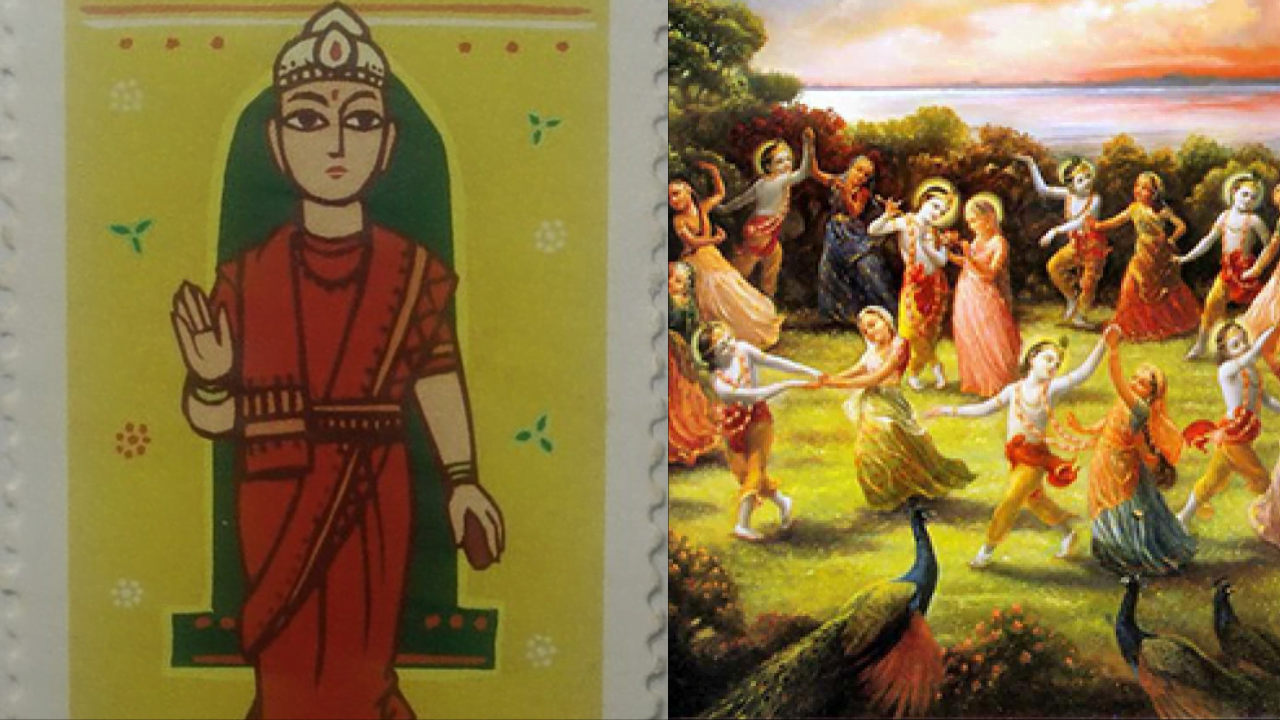“An ant flew to the sky and swallowed the sun. Another wonder – a barren woman had a son”, these are the lines from Muktabai’s verses. These lines themselves confer a sense of defiance against the existing state of things. This very defiance is what sets Muktabai and other women of the Bhakti movement apart.
The Bhakti movement marks one of the first intersectional movements in India. Firstly, it mainly aimed at worshipping God, appreciating the ethereal through personal devotion and through the elaborate rituals and customs developed by Brahmanical authorities. Secondly, it focused on making this process more inclusive in terms of making it open to women and people belonging to the marginalised section of societies who were excluded. Thus, this movement cut across the boundaries of spiritualism to make it more inclusive in terms of gender, class and caste categories. One such saint who heralded this movement is Muktabai or Muktai.
She was an important part of a group of the 13th-century Bhakti movement in Maharashtra called the Warkari sampraday. Muktabai had three siblings who themselves are well-renowned throughout Mahashastra for their contribution to the Bhakti movement and their abhangas.
Muktabai could have easily taken a backseat and supported her brothers in their spiritual endeavours, but she chose not to stop there. She chose to explore the path of devotion and do something that society had shielded her from. This is where the roots of feminism could be seen sprouting in her.

Another interesting fact about Muktabai is her familial background, though hailing from a Brahmanical family, her family was quite literally shunned by society, they had to live on the outskirts of their hometown and no one from the community was allowed to maintain contact with them. This was because her father Vitthalnath switched back to “grihasthashram” or a conjugal life after living life as an ascetic, which was considered an aberration by the then society. His children, as a result, were not accepted by society.
Later, since, the Brahman community wouldn’t accept their children, Vitthalnath and his wife Rukmini died by suicide in the hope that in their absence from their children’s lives, the Brahmanical community will accept their children. Unfortunately, that did not happen. The children, however, not just had to struggle with the sorrow of their parent’s death, but they also had to put up a fight with the Brahmanical authorities.
Muktabai clearly challenges the idea that spiritualism can only be exercised by being disconnected from everyday life or by leading a conjugal life. It can only be done in a good manner by engaging with people on an everyday basis, being an interventionist in this sense.
This experience perhaps shaped Muktabai’s perception and made her work towards a more inclusive approach towards divine devotion. She was someone who experienced exclusion, and discrimination and rose up against it by becoming one of the most widely remembered Bhakti saints in Maharashtra. From what has been understood from her Abhangas, Muktabai was precepted into the spiritual world by her eldest sibling Nivruttinath. Her other two siblings Dhnyaneshwar and Sopan dev also contributed to this, by holding intellectual discussions and participating in waris with her.

All her Abhangas are in Marathi, which makes them accessible to the common people and highlights another vital aspect of the Bhakti movement which is the emphasis on regional language. Mukta in Marathi means freedom, that is what Muktabai signifies for the women of even today’s generation- a sense of liberation. For people in general, she signifies liberation from the rigid Brahmanical and societal norms and structure of worship and losing oneself in deeper devotion.
Muktabai emerges as a woman who is not afraid to call out to her siblings when the need arises. In fact, one of her very famous abhangas Tatiche abhangas is based on one such incident. Once Dhnyaneshwar was angry because someone said something insulting to him and he locked himself up in a room and refused to talk to anyone. Muktabai started knocking on the door and chided him by saying that being a saint, he should not be upset over the follies of the world, he should in fact try to address the situation.
Also Read: The Complex Reality Of Women Devotees In The Bhakti Movement
Muktabai clearly challenges the idea that spiritualism can only be exercised by being disconnected from everyday life or by leading a conjugal life. It can only be done in a good manner by engaging with people on an everyday basis, being an interventionist in this sense.
Moreover, although women’s participation in the Bhakti movement marked a rise of proto-feminism, it witnessed multiple strands of it. Muktabai’s verses are very different from that of Mirbai’s or Andal’s. Andal wrote verses that marked the love between her and Vishnu, at times some of these were very intimate.
As your swooping shadow deepens night’s ink
I flare in love, afflicted, sleepless.
Your softest Southern breeze fans my passion. Help me.
I could blaze to death
As can be seen in the verses above, she saw Vishnu as her beloved, and so did Mirabai. These women, just asserted their feminism, by talking about their love, even sexual desires openly. They belonged to the spiritual sphere but unlike Brahmanical theory that emphasises on respecting God, these women focused on loving God, thus challenging the existing norms. At the same time, women professing their love and expressing their desires is what sets them apart.

However, Muktabai was different from these women saints as her verses do not focus on a personal connection, love or womanhood in particular, they focus more on philosophy and the theme of spiritualism in general. Does that make her a lesser feminist?
No. Because this marks another strand of feminism, as she does not restrict her identity to her relationship with God, she asserts her individuality as a saint and emerges as an intellectual on numerous issues. This becomes even more interesting as one notices how Muktabai never lived beyond her teenage years and goes on to highlight her farsightedness.
What is interesting about Muktabai is that she was not just a saint herself, but she also initiated several others in the varkari sampraday or her spiritual group. A woman saint leading others was something very unique in the 13th century. One such person was Visoba Chati. According to oral tradition, Visoba Chati was a major antagonist to Muktabai and her siblings.
However, he witnesses Muktabai roasting buns on Dhnyaneshwar’s back, which made him realise that the children were extraordinary and he apologises later. After this, Muktabai initiates him by accepting him as her disciple, he then goes on to spend his life dedicated towards spirituality and even becomes the teacher (Guru) of a well-famed Saint Namdev.
Also Read: The Bhakti Movement and Roots of Indian Feminism
Interestingly, Muktabai’s story has two instances where she seems to have broken the inflated opinion of patriarchal spiritual men over possessing superior knowledge. One such is Namdev (the same one who later became a disciple of Visoba Chati). It is said that Namdev had the pride of being the greatest devotee of Vitthal. All saints except Muktabai bowed to him on reaching Pandharpur. She, in fact, asked Gora Kumbhar to “test the pots”, the latter understood the message and started hitting all the saints with a rod, all remained quiet but Namdev started shouting.
Later, Gora Kumbhar proclaimed that he was half-baked, he realised his mistake and became a disciple of Visoba, after which he attained enlightenment. Another such story is that of Changdev Vateshwar. Changdev was a powerful saint who was known for his ability to control nature and tigers. Changdev always thought of men and women differently, he turned away his head when he saw Muktabai bathing. This was something that Muktabai chided him for.

According to Muktabai, a saint should not have the complex of sex and shame, for them, every being should be the same and they should see the essence of god in everyone. Later, Changdev became her disciple. The very idea of seeing men and women as equals and time and again making the point to treat both genders as equal, makes Muktabai, the true pioneer of proto-feminism.
No one can verify whether these stories about miracles are true, but the very fact that these stories about miracles being executed by a woman exist and have been passed on as a part of written and oral tradition in times when women were not even included in the sphere of public voice says a lot about Muktabai.
There is devotion, boldness and an independent spirit in Muktabai’s image and the work she did. Bhakti saints like her overcame their roles that were at the time restricted to motherhood and sustenance of family relations and campaigned for equality in the sphere from which women had always been kept away.
About the author(s)
Arya is an undergraduate student pursuing an Integrated Master's in Development Studies from the Indian Institute of Technology, Chennai. She completed her schooling in the humanities stream from Nagpur. Still hooked to teenage novels, she likes singing, dancing and loves talking. Intersectionality became her favourite word since the time she was introduced to it. Her major interests include adopting the intersectional feminist approach in studying other disciplines like Economics, Management, Development and interpretation of literature, films Etc.






